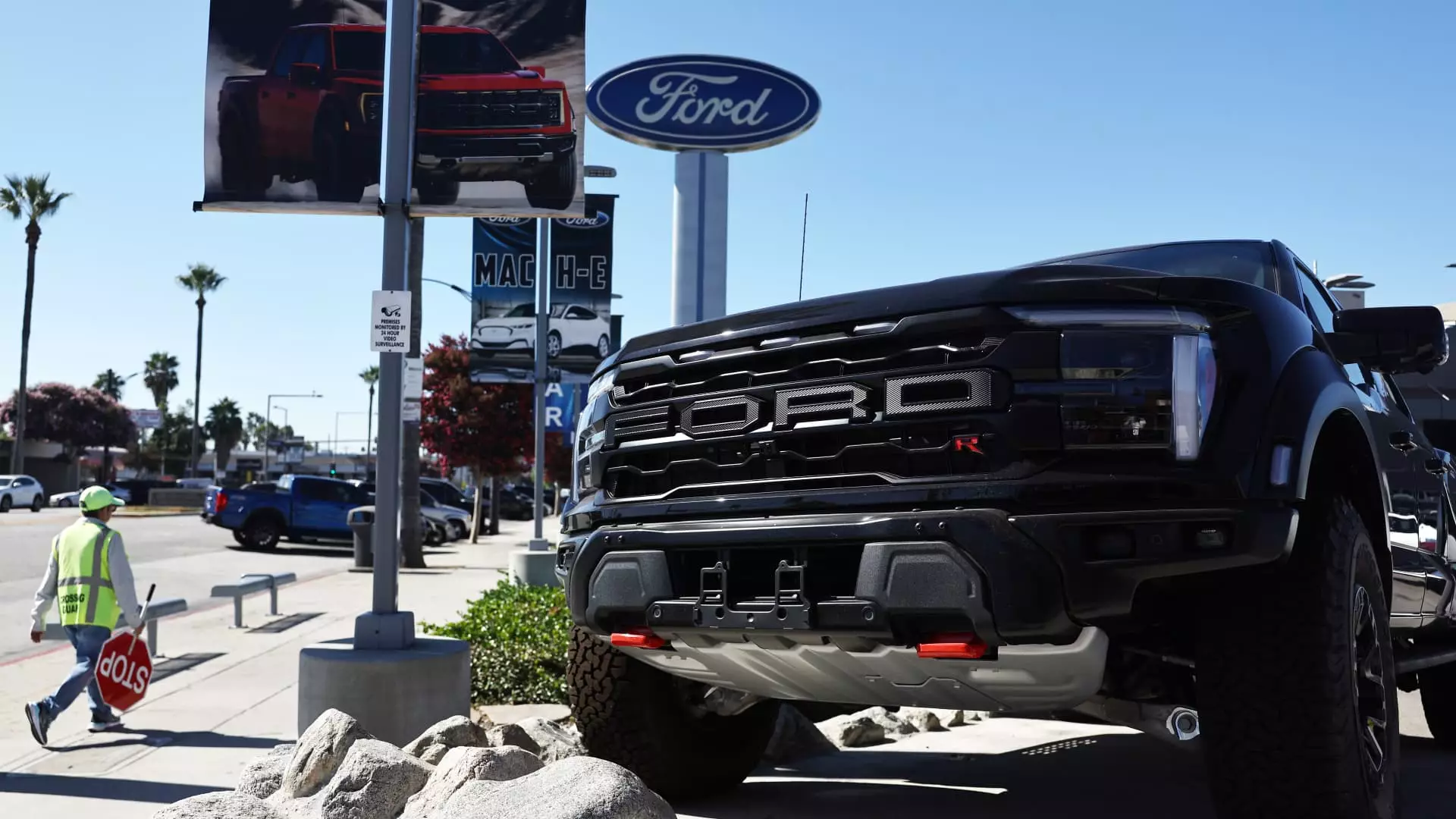The auto industry is no stranger to the bewildering twists of political decision-making. As President Donald Trump’s aggressive move to impose a 25% tariff on imported vehicles was enacted, Ford Motor Company found itself at a crossroads. The corporate giants within the industry often straddle the line between profitability and compliance, and this time was no different. Ford hastily launched its employee pricing program dubbed “From America, For America,” aimed at maintaining consumer interest amidst a worrisome economic climate. However, this decision is not merely an opportunistic marketing pitch; it lays bare the unsettling realities of protectionism through tariffs that can wreak havoc on local businesses and consumers alike.
While touting a narrative of patriotism, tariffs primarily serve to increase costs for consumers—essentially making American auto manufacturing less competitive in a global market. They may generate temporary governmental benefits or subsidies, but the reality is that such actions often translate into a false sense of security for industries heavily reliant on imported components. Ford’s initiative is, then, both a response to economic uncertainty and an acknowledgment of the chaotic implications that tariffs unleash.
Consumer Pricing: A Double-Edged Sword
Ford’s decision to roll out its pricing program exemplifies a dual tactic: enhancing sales while also assuaging consumer fears. Historically, measures like this have sparked debate within the automotive industry—are they concessions or essential moves to keep buyers? Announcing such programs on the cusp of tariffs might seem desperate, but there is also a calculated risk involved that reflects the larger anxieties throughout the economy. If you sell vehicles at or below invoice prices, as Ford is doing, you risk diluting dealer profit margins, ultimately creating a ripple effect that unravels the fabric of automotive retail.
Certainly, it appears Ford’s leadership believes this is the right time to take such risks, stating, “We want to help.” Yet, one must wonder: is this an empowering statement for American consumers or merely a desperate attempt to sustain market share within an increasingly volatile landscape? This is where sincere concerns arise regarding the long-term viability of such strategies, particularly when the U.S. economy teeters on the precipice of recession—a possibility underlined by J.P. Morgan’s recent elevation of recession odds from 40% to 60%.
The Illusion of Stability amidst Inventory Glut
While Ford appears to be weathering the storm with its pricing strategy, stock market fluctuations tell a different story. Observing Ford’s stock decline of a mere 1.4% compared to rivals who faced larger drops reveals how the pressures of inventory are shifting the dynamics of competition. The automotive sector is burdened with the paradox of high inventory levels juxtaposed against sluggish vehicle sales, a reality that can lead to catastrophic financial repercussions if left unaddressed.
Companies such as Stellantis are following suit with similar pricing models, yet this presents a conundrum: will these programs genuinely benefit retailers and consumers, or will they escalate a race to the bottom? With many brands—including Ford—sitting on excess inventory, pricing incentives may simply serve to offload cars rather than promote sustained economic health.
The ‘healthy’ days’ supply considered optimal by industry standards is being overshadowed by the reality of weeks stretching into months, where non-purchases loom. With Ford and Stellantis struggling to sell older models while also attempting to clear the decks for newer releases, the resulting inflationary pressure may well threaten consumer sentiment and brand loyalty in the long run.
Manufacturing Sentiment: A Broader Concern
Ford’s confidence to launch this pricing program may disguise the looming dangers of tariff-driven uncertainty acting as a proverbial gun to the head of consumers who now feel compelled to purchase vehicles preemptively. The initial surge of sales following the tariff announcement may provide a temporary sense of buoyancy, but it cannot mask the underlying trepidation felt in the consumer landscape. Are buyers being encouraged to make urgent purchases out of fear rather than genuine interest?
Consumer confidence, as revealed by Cox Automotive, is inherently fragile. The undeniable anxiety surrounding potential price hikes forces many to act impulsively rather than rationally. This ultimately creates a peculiar paradox: the greater the perceived instability, the more significant the chance that hasty decisions could lead to greater long-term dissatisfaction and market disillusionment.
Thus, we find ourselves in a precarious phase where purchasing decisions are being dictated not by preference but by external pressures—a terrain fraught with peril. As Ford and others navigate these uncharted waters, we must ponder: is this confinement by tariffs enhancing or undermining the very essence of what a free-market economy should be?
The landscape appears daunting. The consumer’s rush may soon be overshadowed by a gnarly mix of economic uncertainty and corporate strategy, potentially perpetuating a cycle that sacrifices long-term health for short-term gain. Ford’s struggle against this reality is a telling reminder of the cost of protectionist policies in a globalized age.

